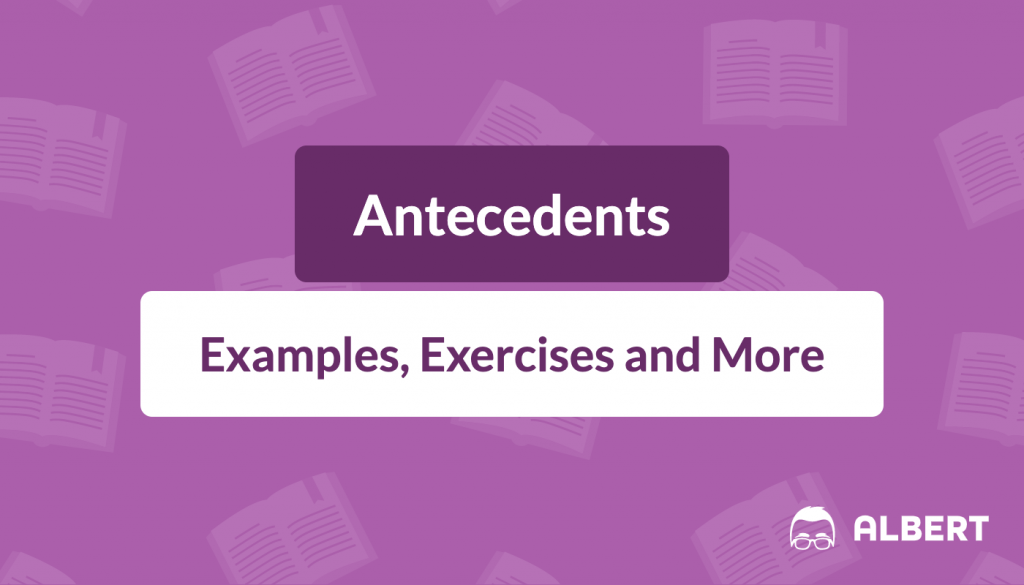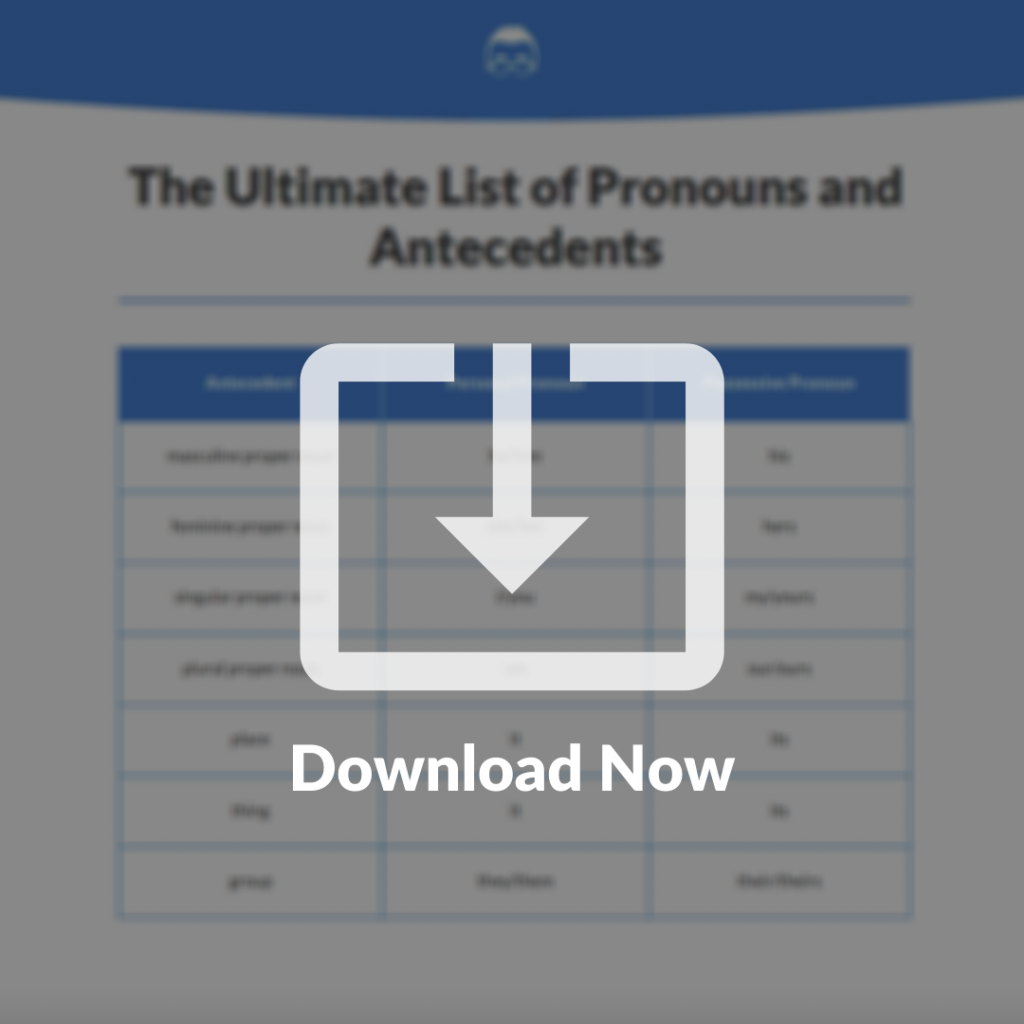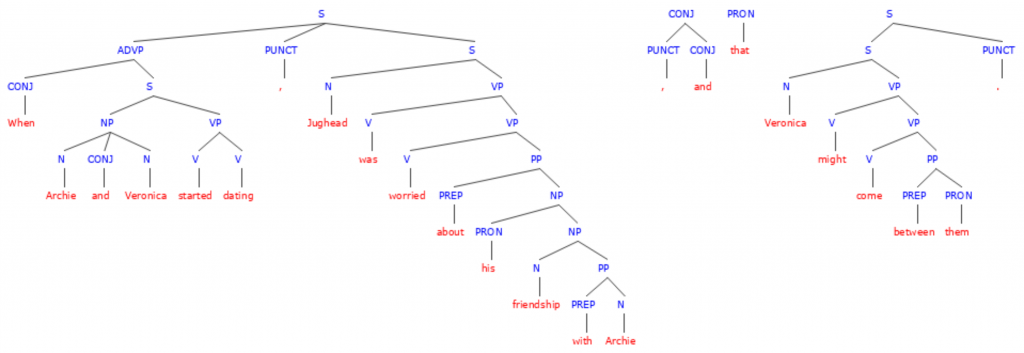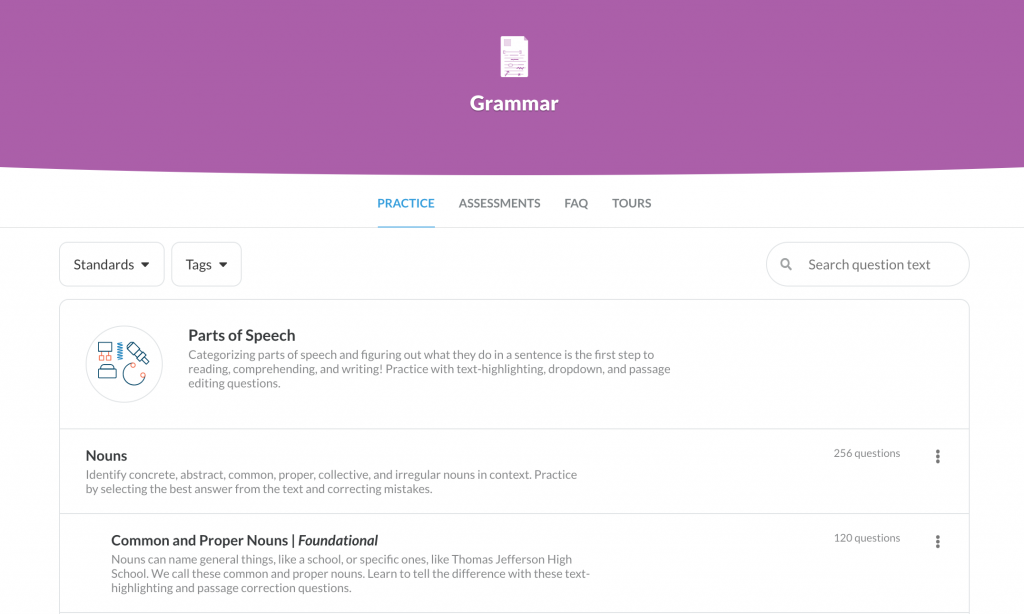Just like you can’t have an apple without an apple tree, an egg without a chicken, or a lightning bolt without a storm, most every pronoun has to have an antecedent, or a word that comes before it.
While some pronouns are the exception to this rule, most pronouns do not make sense unless a clear noun comes before it that the pronoun can refer back to.
For example:
- Alexis bought twenty candles at the Yankee Candle store last weekend; ten were for her, and ten were for him.
Does every pronoun have a clear antecedent in this sentence?
We know that “her” refers back to Alexis, but we do not know who “him” refers to because there is no antecedent in this sentence for this pronoun. The sentence can be easily fixed by adding this antecedent and rewriting the sentence:
- Alexis and David bought twenty candles at the Yankee Candle store last weekend; ten were for her, and ten were for him.

When you’re ready, test yourself with a quiz and practice with our high-quality, standards – aligned questions here.
What We Review
The Basics of Antecedents
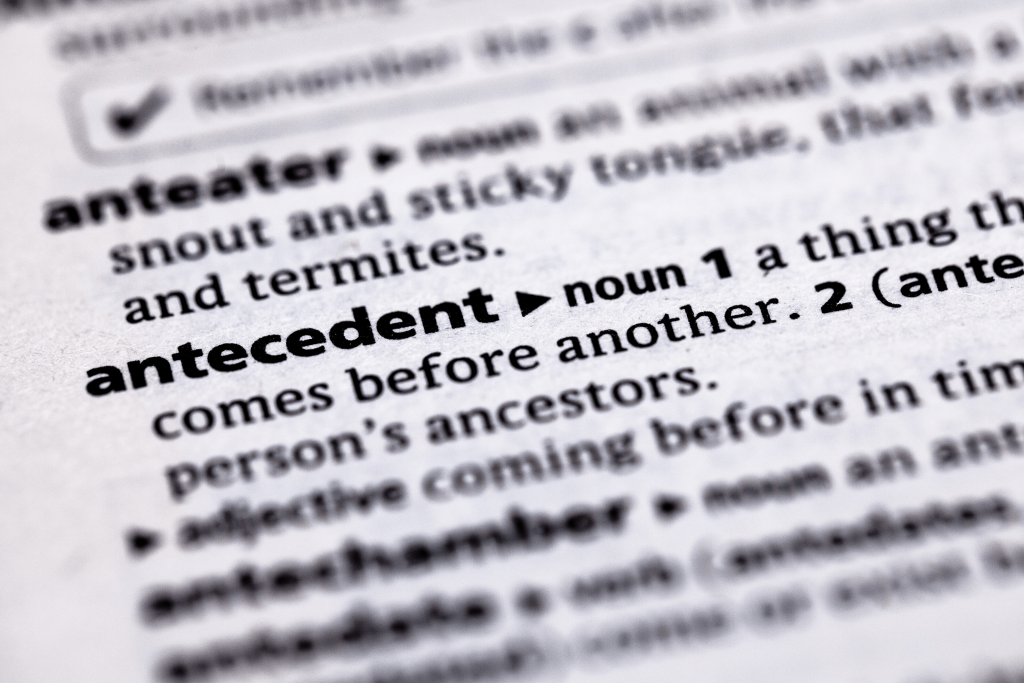
What is an Antecedent?
The word “antecedent” comes from the Latin prefix, “ante”, which means “before”, and the Latin root, “cedere”, which means “go”. This word literally means “to go before”, and can be used to refer to events in history, one’s ancestors, or, in our case, words in a sentence.
Think about an image of a family tree. What do these family trees have in common? Every tree must have roots, or individuals who “came before” and established a family for the first time. We would not be here without our ancestors!

Similarly, nouns act as roots for pronouns when they are antecedents. Readers can understand who or what a pronoun refers to because of who or what came before in the sentence.
For example:
- The bridge collapsed overnight; thankfully no one was on it when it fell.
We know what it refers to because the noun “bridge” comes before as the antecedent. This sentence is a great example of why writers use pronouns with antecedents instead of simply repeating the noun. If pronouns were not used, the sentence would sound like this:
- The bridge collapsed overnight; thankfully no one was on the bridge when the bridge fell.
The sentence above is unnecessarily repetitive. With the appropriate use of pronouns, writers can still communicate without frustrating their readers.

How are antecedents different from pronouns?
While pronouns and antecedents are closely connected to one another, antecedents are different from pronouns in that antecedents must always be nouns and never pronouns.
A pronoun must refer to a specific noun in a sentence, not another pronoun. This would only add to the reader’s confusion!
For example:
- He gave it to him for his birthday.
There are three personal pronouns in this sentence but no antecedents! Who are the people in this sentence? What did one person give to the other?
Here is the rewritten sentence with nouns added as antecedents:
- Javian gave Marcus tickets to see Imagine Dragons in concert as a birthday present; Marcus told him that he could not wait to go.
Now, there are several possible antecedents for the personal pronouns him and he. To avoid confusion, the writer reintroduced the antecedent, “Marcus”, before using the personal pronouns.
This way, it is clearer to the reader that “him” refers to Javian, and “he” refers back to Marcus.

Which pronouns are an exception to the antecedent rule?
Both interrogative pronouns and indefinite pronouns are an exception to this rule. Interrogative pronouns are not required to have an antecedent because these pronouns are used to form questions.
For example:
- Which of you drank all of the hot chocolate?
Since the basis of the question is to find out the antecedent, it would be illogical to include one.

Indefinite pronouns are also an exception because they refer to something or someone nonspecific. Antecedents are only used to refer to something or someone specific.
For example:
- Ultimate Frisbee is a sport that can be enjoyed by anyone.
Since the purpose of this sentence is to show the broad appeal of playing ultimate frisbee, it would be illogical to name specific people and narrow the sport’s appeal.

3 Tips for Understanding Antecedents
Here are some important tips to help you understand antecedents:

Tip #1. Most every pronoun has to have an antecedent
As we discussed above, every pronoun, with the exception of interrogative and demonstrative pronouns, must have an antecedent.
For example:
- The falling rain created a soothing rhythm as it tapped melodically on our tin roof.
In this sentence, rain is the antecedent of it.

Tip #2. Each pronoun in a sentence is required to have its own clear antecedent
If you chose to use more than one pronoun in a sentence, you must make sure that each one of these pronouns has a clear antecedent to refer back to.
For example:
- The cat meowed impatiently at his owner, Susan, as she prepared his dinner.
In this sentence, Susan is the antecedent of she, and the possessive pronoun, his, refers to the cat.

Tip #3. If the pronoun replacing your noun is too far away from your antecedent, repeat the noun before replacing it with a pronoun
Especially if your antecedents are the same gender, it is always safe to repeat the antecedent before replacing it with a pronoun:
- My dogs Tom and Jerry have a very simple relationship with one another; Jerry runs away while Tom chases him.
Because there are two masculine proper nouns and the personal pronoun, him, is also masculine, it is necessary to restate these nouns to make sure the reader knows who the word him refers back to.

Applying the Basics: Antecedent Review & Practice
Now that you understand how antecedents function in sentences, review the anchor chart below and complete the review to fully understand how to use and recognize antecedents.
The Ultimate List of Antecedents
Refer to the graphics below to learn about different types of pronouns and how they pair with antecedents:
These lists, obviously, do not include all possible antecedent and pronoun pairings; however, they are meant to be used as a guide while identifying this type of relationship.
Antecedent Exercises and Review
Now that you know some common antecedents, test your ability to find these nouns.
Select the antecedents in the sentences below. Remember, most pronouns require an antecedent, or a noun that comes before it. Make sure that the pronoun and antecedent agree in both gender and number.
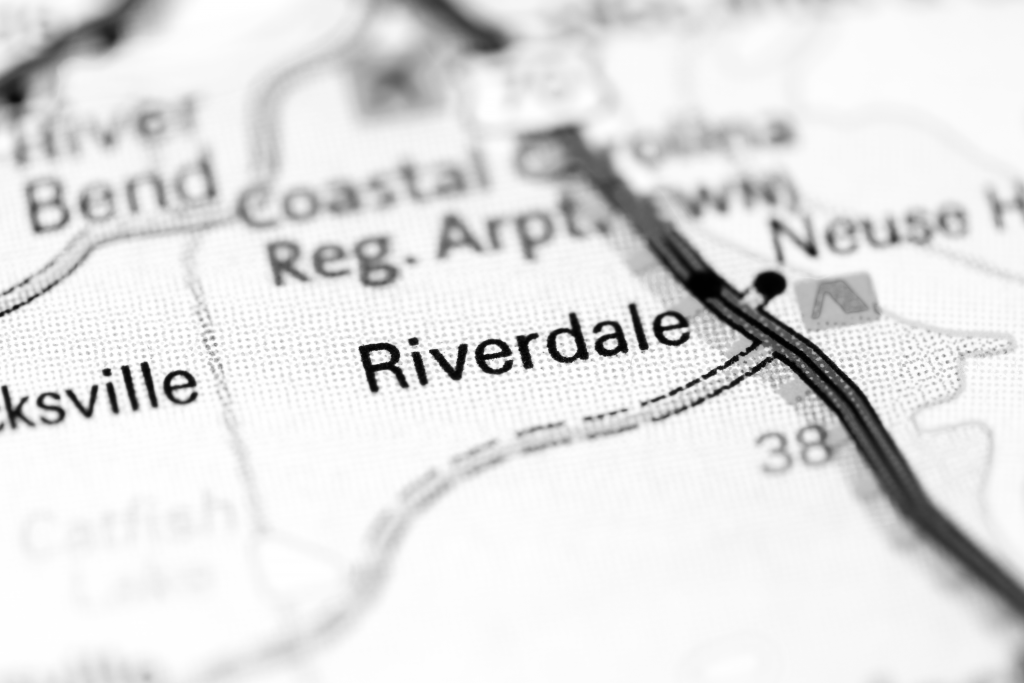
1. When Archie and Veronica started dating, Jughead was worried about his friendship with Archie, and that Veronica might come between them.
- In this sentence, Jughead and Archie together are the antecedent of the personal pronoun, them. The proper noun, Archie, must be used a second time to make sure that the reader knows exactly what relationship Veronica might interfere with.
2. Betty was so attached to Pop’s Diner that she did everything she could to save it.
- In this sentence, Betty is the antecedent of she, and Pop’s Diner is the antecedent of it.
3. Jughead was tired of seeing his dad manipulated by the Southside Serpents; all they ever did was hurt him.
- In this sentence, dad is the antecedent of him, and Southside Serpents is the antecedent of they.
4. Hiram Lodge thought he had control of the entire town of Riverdale until he realized that Archie and Veronica were on to him.
- In this sentence, Hiram Lodge is the antecedent of both he and him.
5. Write a sample sentence and underline the grammatical concept
- In this sentence, italicize the grammatical concept and explain
Pro tip: Remember, almost every pronoun must have its own, clear antecedent that agrees with the pronoun in both number (singular or plural) and gender (masculine, feminine, or neutral).
For additional practice, check out our Antecedents content on Albert.
Try for Yourself: Antecedent Quiz

Feeling confident in your understanding of Antecedents?
Take this short six-question quiz to see what you’ve learned:
1. Can a single antecedent be used for multiple pronouns?
- Answer: Yes
- Correct Explanation: That’s right! One antecedent can be used for multiple pronouns as long as these pronouns are all intended to refer back to the same noun.
- Incorrect Explanation: Sorry, that’s not right! Yes, while it is true that each pronoun requires its own antecedent, if multiple pronouns refer back to the same noun that came before, only one antecedent is necessary.
2. Can a personal pronoun be used without an antecedent?
- Answer: No
- Correct Explanation: That’s right! Personal pronouns refer back to a specific person, place, thing, or group, so these pronouns must have an antecedent.
- Incorrect Explanation: Sorry, that’s not right! Remember, Personal pronouns refer back to a specific person, place, thing, or group, so these pronouns must have an antecedent.
3. Do indefinite pronouns need to have an antecedent?
- Answer: No
- Correct Explanation: That’s right! Indefinite pronouns refer to a non-specific person, place, thing, or group, so an antecedent is not necessary.
- Incorrect Explanation: Sorry, that’s not right! Remember, Indefinite pronouns refer to a non-specific person, place, thing, or group, so an antecedent is not necessary.
4. In this sentence, what is the antecedent of the pronoun, “we”?
My friends and I are going on the field trip to London this summer; we already have a list of places that we cannot wait to see.
- Answer: My friends and I
- Correct Explanation: That’s right! The phrase, my friends and I is the antecedent of we, showing that as a group, the speaker and her friends have made plans.
- Incorrect Explanation: Sorry, that’s not right! Remember, an antecedent is the noun that comes before the pronoun that the pronoun refers to.
5. In this sentence, what is the antecedent of the pronoun, “it”?
Richard was not able to do his homework last night because his dog ate it.
- Answer: homework
- Correct Explanation: That’s right! In this sentence, the word homework is the antecedent of the pronoun it.
- Incorrect Explanation: Sorry, that’s not right! Remember, an antecedent is the noun that comes before the pronoun that the pronoun refers to.
6. In this sentence, what is the antecedent of the pronoun, “her”?
Rachel found Zoe’s lost lunchbag in the hall and gave it back to her.
- Answer: Zoe
- Correct Explanation: That’s right! Zoe is the antecedent of her because earlier in the sentence we found out that the missing lunchbox belongs to Zoe, not Rachel.
- Incorrect Explanation: Sorry, that’s not right! Remember, an antecedent is the noun that comes before the pronoun that the pronoun refers to.
For additional practice with antecedents, check out our practice on Albert: Antecedents.
Teacher’s Corner for Antecedents
While pronoun-antecedent agreement may come as second nature to us as educators, it is not uncommon for students to have difficulty remembering to include a clear antecedent for each of their pronouns in their writing. Whether students are rushing to complete an assignment or they are genuinely confused when using pronouns in their writing, Albert’s Antecedent Practice provides ample opportunities for student practice.
For specific standards on the relationship between pronouns and antecedents, check out the Common Core State Standards site, as well as the Common Core English Language Progressive Skills Chart to help you establish goals for your students’ learning.
When it comes time to assess student learning, Albert’s pre-made grammar assessments allow teachers to hand-pick questions from an extensive bank in order to properly assess only what students have practiced up to a point.
Summary for Antecedents
Be sure to check out our grammar course for more antecedent practice.
You can also access over 3,400 high-quality questions that address nearly every grammatical concept.
Need help preparing for your Grammar exam?
Albert has hundreds of grammar practice questions with detailed explanations to help you master concepts.

